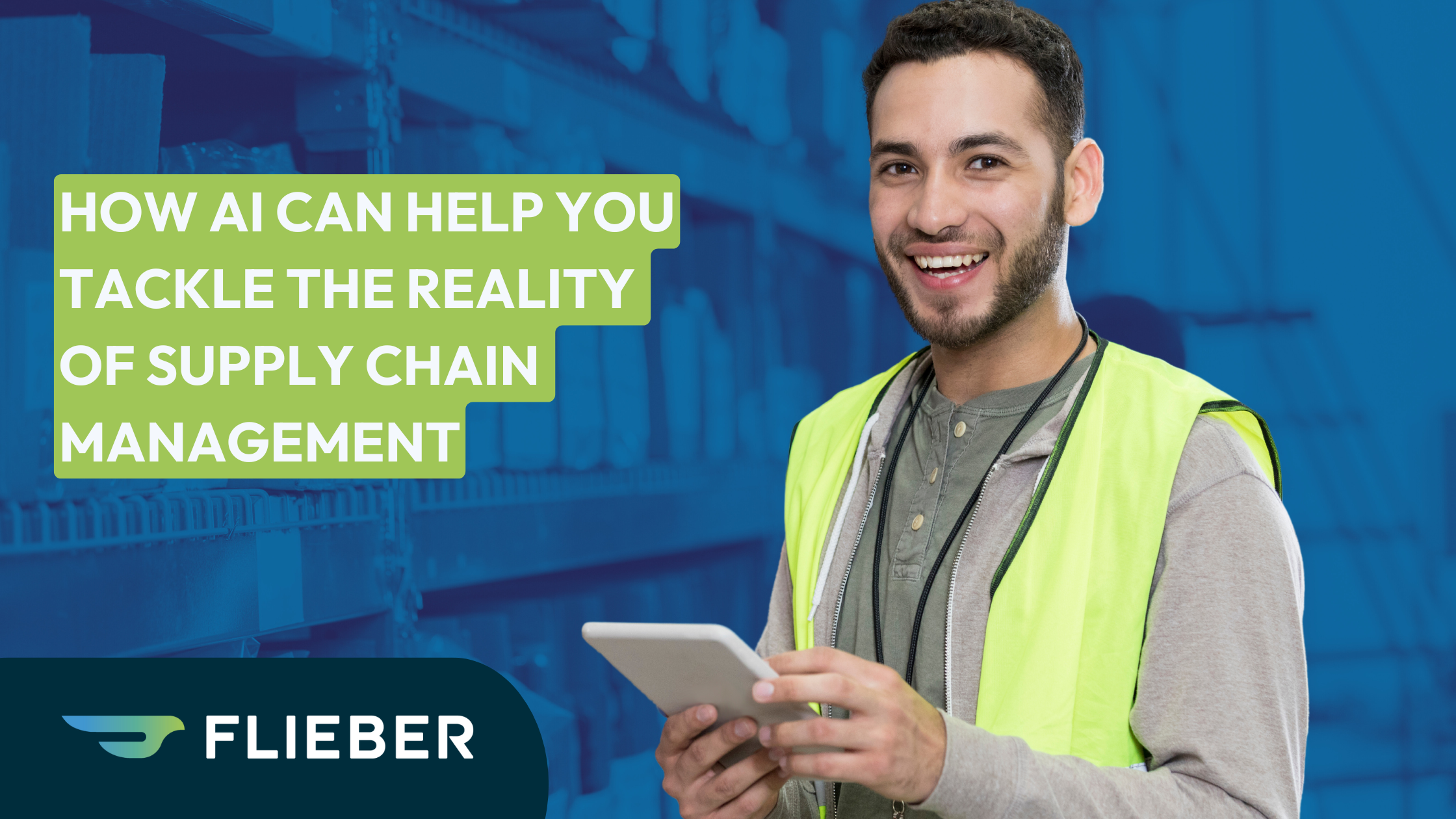If modern retailers know one thing, it’s that no matter how hard you plan, things almost always work out differently than expected. And nowhere is that more true than with your supply chain.
Suppliers, vessels, trucks, warehouses. Supply chains are complex and chaotic by nature. To solve the disconnects between your forecasts and what actually happens on the road, water, or factory floor, you need to be able to act and react as quickly as possible.
The good news is, there’s never been more data available to help you do that. With AI’s ability to crunch terabytes of supply chain data in seconds, you can rebalance your supply chain in real time and identify the next best action at every step.
Today, we’re examining the real benefits of using AI to improve your supply chain management decision making.
Supply chain management 2.0: why your ability to react is everything
When it comes to supply chain management, your decisions are only as good as your view into what’s happening with your sales and inventory in the wild.
I can still remember my first year at HeadClicks. We had a bestseller that was selling faster than expected and unfortunately, we also had zero system for tracking shipments. The clock was ticking. Consumption was outpacing inventory and I had no way of knowing how long my shipment would take to reach the port, or when the truck would pick it up.
Despite the sleepless nights and sweaty palms, what I learned was that, unlike sales forecasting and demand planning, which operate in the theoretical spectrum, supply chain is all about what happens in the real world. And in many ways, it’s still a world of landlines and fax machines.
Every time a stockout was imminent, I’d have to call or email my freight forwarder then wait two days for an answer. But if events like Covid-19, cloud-computing bugs, cyberattacks, and labor strikes have taught us anything, it’s that supply chain management isn’t about planning what to execute, then executing what you planned. The real key is your ability to react quickly when things don't go to plan.
That’s where AI can make the difference. As the amount of supply chain data grows, AI can help retailers get out of the weeds of supply chain changes and start making faster, more strategic decisions.
What is next best action? And how can it improve your decision making
Supply chain experts encourage businesses to think about supply chain in terms of tangible and intangible assets. Tangible assets are the items itself, for example, your raw materials, warehouses and trucks. Intangible assets are your data, planned sales, inventory reports, and the software you use to bring it all together.
Here’s how Ken Chadwick, VP Analyst at Gartner and author of the Future of Supply Chain study, explains it:
“In most cases, what supply chains are really managing more than physical assets are these virtual assets — all of these things that are intangible. It’s really about being able to take those things and apply them differently to our environments to better manage all of the physical assets that are out there.”
Their research found that top supply chain organizations are using AI to optimize processes at more than twice the rate of low performing peers.
Leading retailers know that, with so many physical variables, anything that can go wrong will go wrong. Success is about how you use your virtual assets to enable fast decision-making when things don’t go to plan.
This is where the concept of ‘next best action’ can be a game changer.
In machine learning, the next best action evaluation involves using algorithms to figure out the best decisions to make at each step of a process. AI monitors your data in real time, identifies deviations, defines the next best action, and can even help you execute.
When to use AI in the supply chain
Here are some common scenarios where next-best action recommendations can help you make better supply chain decisions:
- Determining the quantity of items to order based on critical factors like current demand, inventory levels, shipping locations, and sales forecasts.
- Initiating the production process. There are only so many actions you can take to increase your sales once production has started, however, AI can help initiate the production process for the ordered items to save you time on manual processing.
- Communicating with suppliers. Like me, you may find yourself in a position where you need to prioritize orders based on accelerating sales but the supplier may or may not be able to make those adjustments in a timeframe short enough to help you meet your transport cutoff dates.
- Analyzing vessel cutoff dates. With access to historical data on vessel schedules, AI can compare routes and help you decide when to send a shipment. You’ll know exactly what to do to make sure you don’t miss your vessel, or what steps to take when developing a contingency plan.
- Knowing how many units you can sell on average per day until the next batch arrives. If, for example, you have 2,000 units in stock and the next batch arrives in 10 days, you can sell a maximum of 200 units per day. AI can help you decide when to slow sales and alert you when you get close to help you avoid a costly stockout.
- Deciding where to send your units. Are you going to send all your units to the same market or split them between multiple markets? If split, what’s the specific split you're going to make? Do you need a certain number of units set aside for wholesale orders? AI can help you make all these decisions and more.
While we’re still some years away from using next best action recommendations as a regular part of day-to-day retail operations, leading retailers are already using AI and machine learning to help them make better decisions to protect revenue and profitability.
But be warned, over-reliance on AI is a real problem. Yes, AI in supply chain management can be a game changer — but that doesn’t mean it’s a silver bullet for all your inventory and supply chain decisions.
Strong supply chain management needs a human behind the wheel
When it comes to your supply chain, visibility into the details can make all the difference. And that’s exactly what AI can deliver.
With the rise in AI for providing data-informed next best action recommendations, it’s only a matter of time before it finds its way into our daily supply chain workflows. In the not-so-distant future, we may even see a rise in autonomous robots working alongside humans on warehouse floors. But at the end of the day, AI’s real potential comes down to its role as a decision support tool — not a replacement for critical and creative thinking.
Only a human can understand the deep layers and levels of nuance that make up your supply chain. But with the help of AI, you can arrive at those decisions using better information in a fraction of the time
Let machines do what they’re good at, so you can get back to what matters. Try the inventory forecasting algorithm that’s been tested on over 3 million SKUs. Sign up for a free trial of Flieber today.




